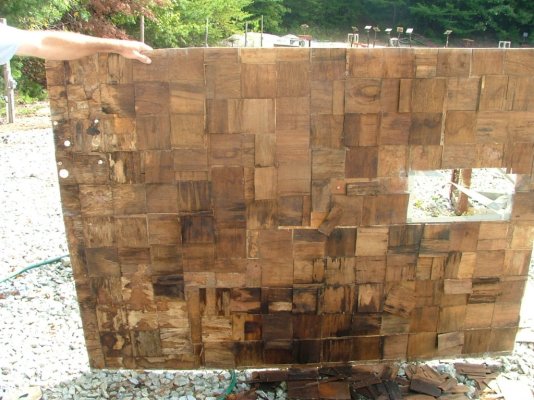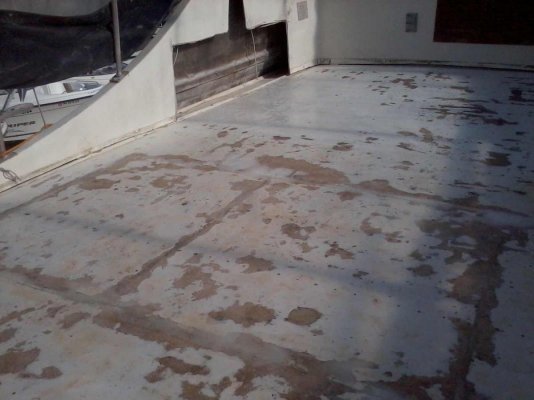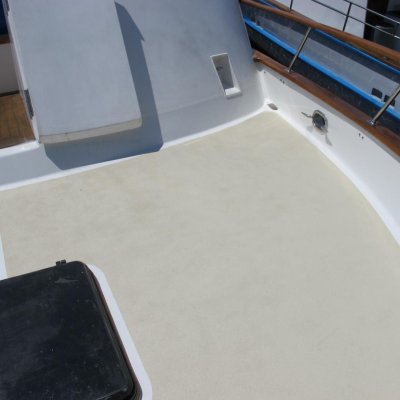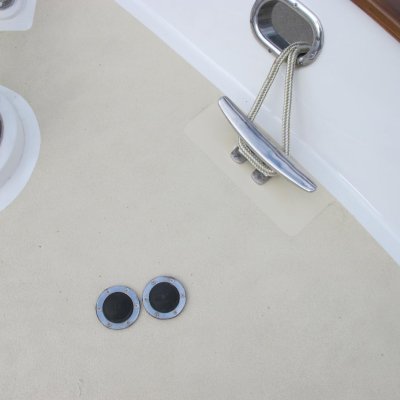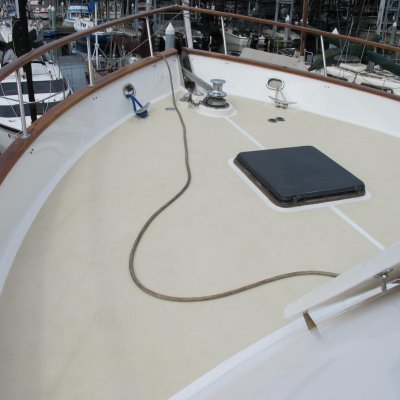Tony B wrote:Exactly how difficult and how time consuming is removing a teak deck and re-coring the deck and replacing with fiberglass?
*Regardless of what you might hear otherwise, to do it right is a major job.* A few years ago we watched a fellow on our dock replace the teak decking on his 36' (or maybe 38') Island Gypsy.* He did not have to do any core work, he was just removing the teak.
The teak planking on most boats adds stiffness ot the deck (not strength, stiffness, there's a difference) and the builders will most likely take this into account when determining the thickness of the fiberglass-wood-fiberglass sandwich that most subdecks consist of.* So removing the teak planking on many types of boats will reduce the stiffness of the subdeck.* If this stiffness is not restored, the deck will flex more than it should and it's conceivable that small cracks could develop in the upper fiberglass layer that could allow moisture to get down into the core.
So the proper solution is to remove the planking, prep the fiberglass surface of the subdeck, and then add layers of fiberglass matting and resin on top of the subdeck to restore the stiffness followed by whatever sort of non-skid surface you prefer.
The fellow with the Island Gypsy put four layers of glass over the subdeck of his boat after the wood was removed.* The retired marine engineer who has a boat on our dock and had a career with one of the best-known production boat companies in the US felt that four layers of glass was overkill, and that two would have done the job very nicely.* Most of the people on the Grand Banks owners forum who have removed their boat's original decking went with two layers of glass over the subdeck.
The Island Gypsy owner did an absolutely superb job.* I suspect his work is better than what the manufacturer would have done had they built the boat with a fiberglass-surfaced deck to begin with.* His deck is probably strong and stiff enough to land a plane on

* But it was a huge amount of work.* It took a full summer plus about half of the following summer to do it.* We talked to him shortly after he'd completed the work and his comment then was, "Had I known at the outset how much time and effort would be required I never would have done it."
As I said, he did not have to do any subdeck replacement so I have no idea how extensive a job that entails.* And while there are people who talk about all sorts of quicky solutions for removing teak planking-- from simply filling screw holes and applying non-skid to using truck-bed liner to you-name-it-- I believe-- as do the experienced shipwrights on the GB forum--- that the only true, permanent solution is to do what the Island Gypsy owner and GB owners have done, and that's to do the job properly from the outset.* Given the amount of work required, it's not something to be taken on lightly.

